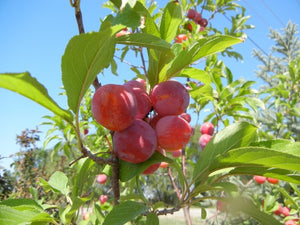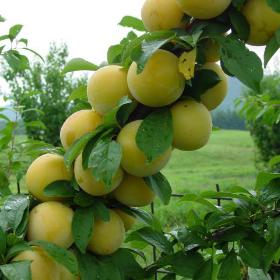AU ROSA japanese plum SEMI-DWARF (St Julien A)
Shipping calculated at checkout
15 in stock
Need more? Contact us
This tree needs pollination
Compatible trees:
TOKA plum SEMI-DWARF (MUSTANG)
TOKA plum SEMI-DWARF (MUSTANG)
Satsuma Japanese Plum
Satsuma Japanese Plum
SHIRO plum SEMI-DWARF (myrobalan) and DWARF
SHIRO plum SEMI-DWARF (myrobalan) and DWARF
SHIRO plum SEMI-DWARF (myrobalan) and DWARF
SHIRO plum SEMI-DWARF (myrobalan) and DWARF
Available only in spring 2026
🍑 AU ROSA Japanese plum tree (Prunus salicina ‘AU Rosa’)
🌸 Origin and type
- Species: Prunus salicina (Japanese plum tree)
- Origin: Auburn University (Alabama, United States)
- Selection: AU (Auburn University) program for improved quality and hardiness
- Type: deciduous fruit tree, highly decorative flowering
🌳 Tree characteristics
- Habit: upright to slightly spreading, very floriferous
- Vigor: medium to strong
- Adult size: 4 to 6 m (depending on rootstock and pruning)
- Hardiness: USDA zones 5 to 8 (withstands temperatures down to approx. –25°C)
- Exposure: full sun, warm and sheltered location
- Soil: deep, fertile, well-drained, neutral to slightly acidic pH
🍑 Fruit
- Shape: round, medium to large size
- Skin: bright red to shiny purple
- Flesh: golden yellow, juicy, firm and sweet
- Taste: sweet, pleasant, well-balanced (sugar + slight acidity)
- Use: fresh, in jams, pies, or preserves
- Storage: 2 to 3 weeks in a cool place
🌼 Flowering and pollination
- Flowering: April (fragrant white flowers)
- Pollination: partially self-fertile, but best production with another compatible Japanese variety
- 🔗 Recommended pollinators: Methley, Santa Rosa, Ozark Premier, Toka
- Natural pollinators: bees, bumblebees
🍂 Harvest
- Period: mid- to late summer (depending on climate, often August)
- Yield: high and consistent with good pollination
- Tip: pick when fully ripe for optimal flavor
🛠️ Cultivation and care
- Planting: fall or spring, in well-drained soil
- Watering: regular in the first few years, then moderate
- Pruning: winter (frost-free) to balance the branches and promote light
- Thinning: recommended to avoid overloading with fruit
- Fertilization: compost or fruit fertilizer every spring
- Care: mulch at the base, avoid standing water
- Diseases: relatively resistant, but watch out for monilia, scab, and aphids
🍽️ Uses
- Enjoy fresh for its sweet and juicy flesh
- Ideal for jams, compotes, pies, or dried fruit
- Excellent table and processing fruit
💡 Advantages of AU ROSA
✅ Beautiful red skin and very appetizing golden flesh
✅ Sweet and fragrant flavor
✅ Good hardiness (up to zone 5)
✅ Decorative flowering in spring
✅ Generous and regular production
Hardiness Zones
Number of years for production
4 ans






